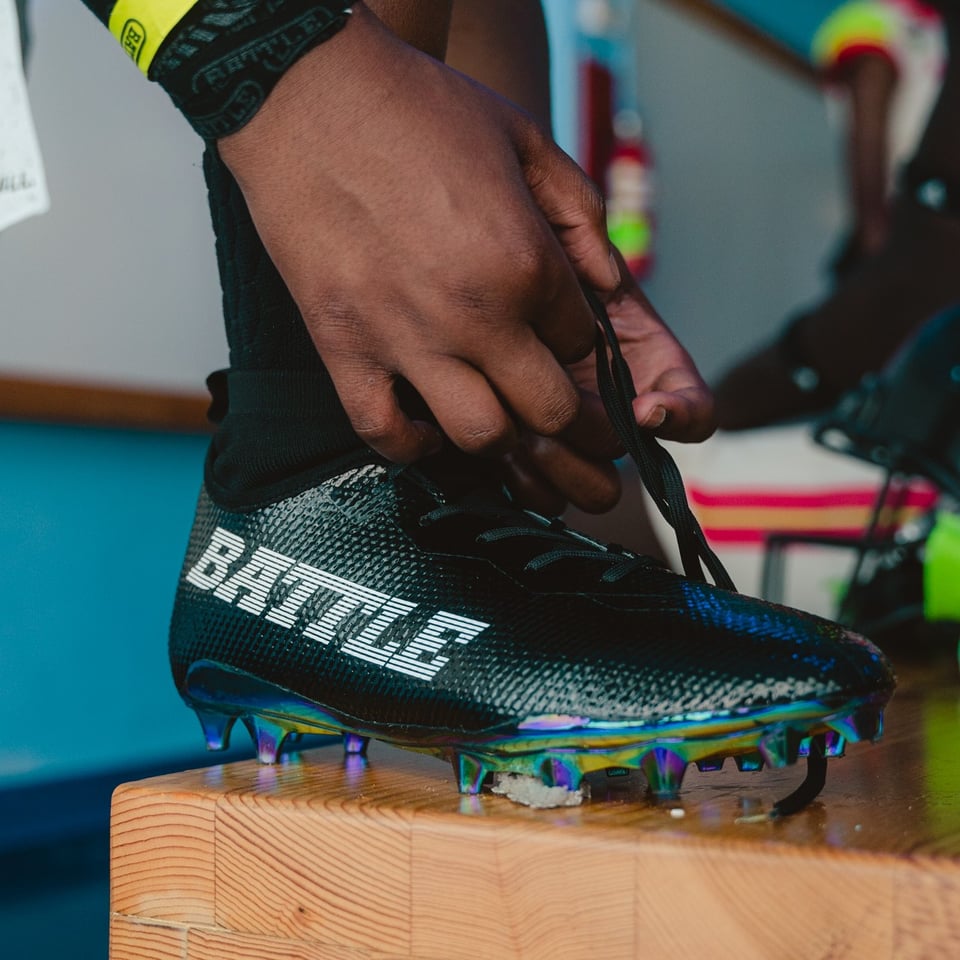Understanding the Different Types of Football Cleats

Football cleats are a crucial part of a player's equipment as they provide the necessary traction and stability to maneuver the field. When it comes to football cleats, there are three primary types: screw-in cleats, molded cleats, and rubber bottom cleats. Each type has its advantages and disadvantages, and selecting the right one depends on various factors such as field conditions, playing position, and personal preferences. In this blog post, we'll discuss the different kinds of cleats and the pros and cons of each type so you know what to keep in mind while shopping for football cleats.
What Are Screw-In Cleats?
Glad you asked! Screw-in cleats, also known as detachable cleats, feature studs that can be removed and replaced depending on the field conditions. These types of cleats offer excellent traction and versatility, making them ideal for football players who regularly play on different surfaces. The length and shape of the studs can also be customized to suit a player's playing style, making them suitable for all positions on the field.
Before we get started, here’s the key takeaways to know:
- Screw-in cleats offer football players versatility and customization options
- Molded cleats offer affordability and low maintenance on the field
- Rubber bottom cleats, also called turf shoes, are ideal for artificial turf surfaces
The Pros of Screw-In Cleats:
Each type of football cleat has its own purpose but the benefits of screw-in cleats is that they are customizable for different playing styles, extremely versatile, and long-lasting. What you’ll want to keep in mind if purchasing a pair of screw-in cleats is that this type of cleat does require maintenance and can be both expensive and time-consuming during games.
- Customizable: Players can adjust the length and shape of the studs to suit their playing style and field conditions.
- Versatile: These cleats can be used on a variety of surfaces, including natural grass and artificial turf.
- Long-lasting: The ability to replace the studs means the cleats can last for a long time.
The Cons of Screw-In Cleats:
- Requires Maintenance: Players must remove the studs after each game to clean and inspect them for wear and tear.
- Expensive: Screw-in cleats tend to be more expensive than molded or rubber bottom cleats.
- Time-consuming: It takes time to replace the studs, which can be a hassle during a game.
All About Molded Cleats
Molded cleats feature permanent studs that are fused onto the sole of the shoe. They are popular among football players and are widely used for various playing positions.
What’s Great About Molded Cleats
- Lightweight: Molded cleats tend to be lighter in weight than screw-in cleats, making them ideal for players who rely on speed and agility.
- Low maintenance: Since these cleats don't have removable studs, they require less maintenance than screw-in cleats.
- Affordable: Molded cleats are generally more affordable than screw-in cleats.
What To Keep In Mind When Buying Molded Cleats
- Less versatile: Molded cleats are suitable for specific surfaces only and cannot be used on different surfaces.
- Limited customization: Players cannot adjust the length or shape of the studs, which can affect their playing style.
- Short lifespan: The studs may wear out faster than screw-in cleats, reducing the lifespan of the cleats.
Everything You Need to Know About Rubber Bottom Cleats
Rubber bottom cleats, also known as turf shoes, feature rubber studs on the sole of the shoe. These cleats are designed for use on artificial turf fields and are not suitable for natural grass surfaces.
What’s Great About Turf Shoes
- Great traction: Rubber bottom cleats offer excellent traction for football players on artificial turf surfaces, which can be slippery.
- Comfortable: The rubber studs provide a cushioning effect that can make the shoes more comfortable to wear.
- Low maintenance: Like molded cleats, rubber bottom cleats require less maintenance than screw-in cleats.
What To Keep In Mind About Rubber Bottom Cleats
- Limited use: Rubber bottom cleats are designed for use on artificial turf surfaces only and cannot be used on natural grass.
- Limited customization: Players cannot adjust the length or shape of the studs.
- Limited versatility: They are not suitable for all positions on the field, and players may need to switch to different cleats for different positions.
Selecting the right type of football cleats is crucial to ensure optimal performance on the field. Screw-in cleats offer versatility and customization options, molded cleats offer affordability and low maintenance, and rubber bottom cleats are ideal for artificial turf surfaces. It's essential to consider field conditions, playing position, and personal preferences when choosing the right type of cleats for battle.



